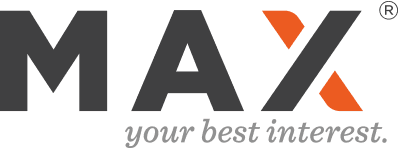
Max members are earning about 10 times more on their cash than the national average.
With the move towards the fiduciary standard across the investment-management landscape, financial advisors increasingly are looking at how they can make sure their clients are getting this standard of advice for the cash portion of their portfolios as well as for their securities. That’s where Max comes in.
Cash is the one asset class that’s present in every portfolio. But a near-zero-interest-rate environment over the last few years has meant that investors overwhelmingly are earning almost nothing on cash. The national average on savings accounts is 11 basis points — 0.11%. As a fiduciary, an advisor is bound to give advice that’s in a client’s best interest financially. For cash, this means advisors have to seek out ways that clients can earn more interest while remaining insured under the FDIC deposit guarantees.
– Think carefully before using money market funds
Money market funds are a traditional substitute for cash, because they’re designed always to trade at a stable $1 per share. But with new regulations, these funds may now be able to hold onto investors’ money if markets are in turmoil. That means that clients may not be able to get their money out of a money market fund when they need it most. With this lower level of safety, and essentially no yield, money market funds may not be up to the fiduciary standard as a cash equivalent.
– Use online banks
Online banks don’t have branches, so their cost structure is considerably less than their brick-and-mortar competitors. This imbalance allows them to offer higher interest rates to depositors — above 1%, in some cases, making online banks the highest-yielding places to park cash that clients wish to keep fully liquid. FDIC-insured online banks have the same federal deposit guarantee as any other U.S. bank protected under the program.
– Seek more FDIC coverage
Many investors don’t realize that exceeding the FDIC limits in their accounts means that excess money may not be safe if something happens to the bank. If your clients hold more cash than the FDIC limit — $250,000 per depositor, per account type, per institution — you should consider helping them open accounts at additional banks to gain FDIC coverage for as much of their cash as possible. Keeping cash safe is a prerequisite for fiduciaries.
– How Max can help
It’s possible to get both higher interest on cash and greater FDIC coverage. That’s what Max provides for advisors and their clients through the Max Advisor Dashboard. The average Max client is currently earning more than 1.00% on cash and enjoying FDIC coverage across several institutions. Learn more about how you and your clients can benefit at MaxForAdvisors.com.








